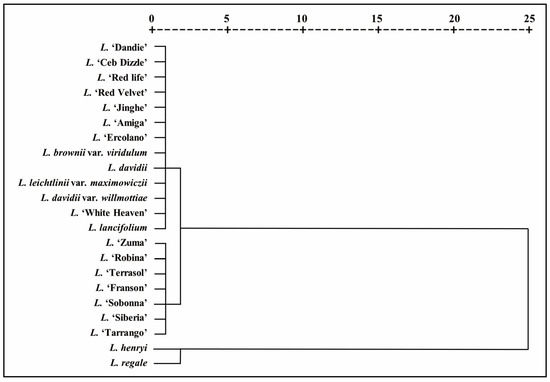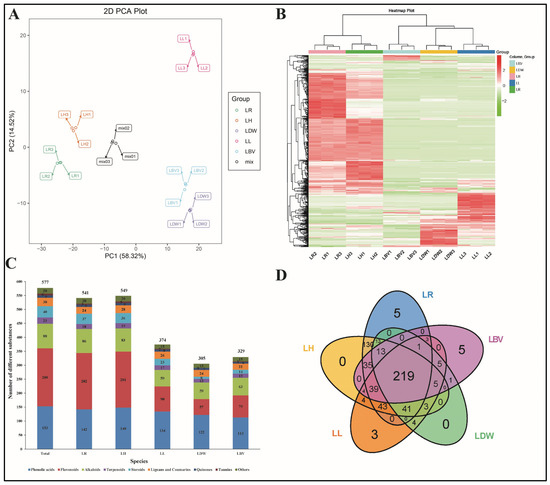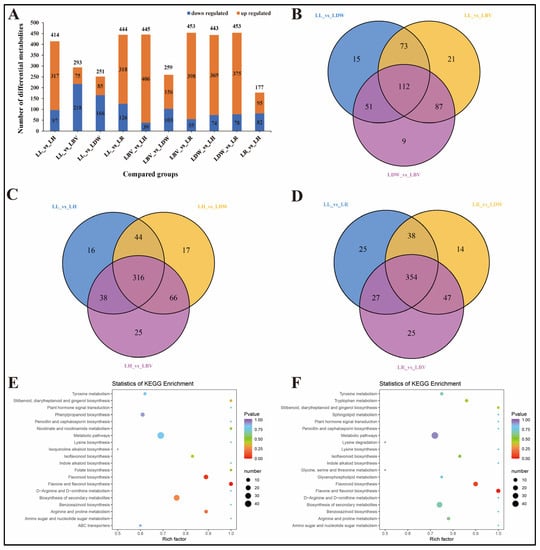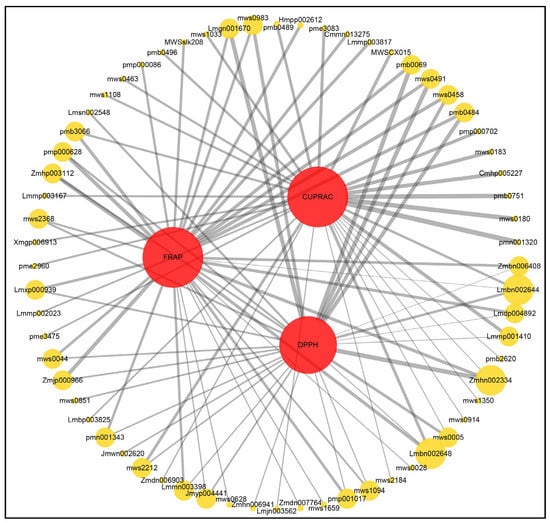What are Plant Secondary Metabolites?
Plant secondary metabolites refer to organic compounds that do not directly participate in the essential functions of plant growth, development, or reproduction. Unlike primary metabolites that are vital for basic life processes, secondary metabolites are specialized compounds that serve diverse ecological purposes. They are often synthesized in specific plant tissues, such as leaves, flowers, roots, or stems, and their production can be triggered by environmental stimuli or attacks from pathogens.
The analysis of plant secondary metabolites holds significance due to their varied chemical structures and wide range of biological activities. Many secondary metabolites have demonstrated pharmaceutical properties, including antimicrobial, anticancer, antioxidant, and anti-inflammatory effects. Furthermore, these compounds play a role in plant-human interactions, such as attracting pollinators or deterring herbivores. The study and identification of these metabolites contribute valuable insights into plant physiology, ecology, and potential applications in various industries.
Plant Secondary Metabolite Analysis Services by Creative Proteomics
Creative Proteomic offers a comprehensive range of plant secondary metabolomics services to facilitate research and development in this field. Our services include:
Metabolite Profiling: Creative Proteomics employs state-of-the-art mass spectrometry-based techniques to analyze the global metabolite profile of plant samples. This approach allows for the simultaneous identification and quantification of a wide range of secondary metabolites, providing a comprehensive overview of the plant's chemical composition.
Targeted Metabolite Analysis: In addition to global profiling, Creative Proteomics offers targeted analysis of specific plant secondary metabolites of interest. By utilizing multiple reaction monitoring (MRM) techniques, they can accurately quantify selected metabolites with high sensitivity and specificity.
Metabolite Annotation and Pathway Analysis: Creative Proteomics provides in-depth annotation and pathway analysis of plant secondary metabolites. By integrating cutting-edge informatics tools and databases, they can identify the metabolic pathways associated with specific metabolites and unravel the complex network of secondary metabolite biosynthesis in plants.
Metabolite Identification and Structural Elucidation: Creative Proteomics excels in the identification and structural elucidation of unknown plant secondary metabolites. By combining high-resolution mass spectrometry with advanced data analysis algorithms, they can determine the chemical structures of novel metabolites, facilitating their characterization and potential utilization.
Techniques and Instrumentation for Plant Secondary Metabolomics
Creative Proteomics utilizes various advanced techniques and instrumental platforms:
Mass Spectrometry (MS):
- Time-of-Flight (TOF) Mass Spectrometer: Agilent 6550 iFunnel Q-TOF LC/MS
- Quadrupole-Orbitrap Mass Spectrometer: Thermo Scientific Q Exactive Plus or Orbitrap Fusion
Liquid Chromatography (LC):
- Ultra-High-Performance Liquid Chromatography (UHPLC): Agilent 1290 Infinity II UHPLC System
- High-Performance Liquid Chromatography (HPLC): Agilent 1260 Infinity II HPLC System
Gas Chromatography (GC):
- Gas Chromatography-Mass Spectrometry (GC-MS): Agilent 7890B GC System coupled with Agilent 5977A MSD
 Workflow for Plant Metabolomics Service
Workflow for Plant Metabolomics Service
List of Plant Secondary Metabolites (including but not limited to)
| Alkaloids |
Flavonoids |
Phenolic Acids |
Phenolic Glycosides |
Stilbenes |
| Coumarins |
Lignans |
Caffeoylquinic Acids |
Napthoquinones |
Coumarin Glycosides |
| Megastigmanes |
Naphthodianthrones |
Cinnamic Acid Derivatives |
Phloroglucinols |
C-glycosyl Flavones |
| Terpenoids |
Glycosides |
Tannins |
Quinones |
Saponins |
| Betalains |
Anthocyanins |
Glucosinolates |
Essential Oils |
Xanthones |
| Betaine Derivatives |
Glucuronides |
Indole Alkaloids |
Pyrrolizidine Alkaloids |
Tocopherols |
| Phytosterols |
Benzoxazinoids |
Lactones |
Cyanogenic Glycosides |
Isoquinoline Alkaloids |
| Neolignans |
Isoflavonoids |
Nitrile Glucosides |
Sulfur-Containing Compounds |
Amino Acid Derivatives |
Why Choose Us?
- Detection Platforms: Untargeted metabolomics and targeted metabolomics techniques are used for metabolite detection, ensuring both qualitative and quantitative accuracy.
- Comprehensive Database: A self-built plant species-specific metabolite database with a coverage of over 28,000 substances.
- Rich Variety of Compounds: Encompassing a wide range of secondary metabolite types, including flavonoids, alkaloids, terpenoids, coumarins, lignans, and more.
- Stability in Detection: Utilization of six major quality control measures to ensure the delivery of high-quality data.
- Leading Number of Detected Compounds: Detection of 600-1000 metabolites in a single analysis.
Applications of Plant Secondary Metabolomics
Pharmaceutical Research: Plant secondary metabolites are a rich source of bioactive compounds with potential therapeutic applications. By studying plant secondary metabolomics, researchers can identify novel lead compounds for drug discovery and development.
Agricultural Science: Understanding the metabolic profile of plants can contribute to the development of crop varieties with enhanced resistance to pests, diseases, and environmental stress. Plant secondary metabolomics can assist in breeding programs aimed at improving crop productivity and quality.
Ecological Studies: Analyzing plant secondary metabolites helps elucidate their roles in plant-herbivore interactions, pollination, and defense mechanisms. This knowledge can aid in understanding ecosystem dynamics and the ecological relationships between plants and other organisms.
Natural Product Discovery: Plant secondary metabolites have long been a valuable source of natural products used in industries such as cosmetics, food, and agriculture. Plant secondary metabolomics can guide the identification and isolation of novel natural products with commercial potential.
Sample Requirements for Plant Secondary Metabolites Assay
| Sample Types |
Minimum Sample Size |
Biological Repeat |
| Plant Tissues |
Stem, bud, node, leaf, flower, fruit, root, callus tissue |
600mg |
3-6 |
| Liquid Samples |
Root exudates |
10mL |
| Fermentation broth, wine, tissue fluid, fruit juice |
5mL |
| Honey, nectar, oil, extract |
500μL |
| Specialty Samples |
Cultured samples, presence of liquid |
600mg |
Case 1. Metabolite Analysis Reveals Diverse Compounds in Lily Species
Background:
In this study, the researchers conducted an analysis of secondary metabolites found in different types of lilies. These secondary metabolites encompass compounds like phenolic acids, flavonoids, alkaloids, and others, which are recognized for their potential health advantages and antioxidant properties. By examining the makeup of these metabolites in lilies, valuable information regarding their nutritional and medicinal characteristics can be obtained.
Samples:
Five representative species of lilies were selected for the metabolite analysis: L. regale, L. henryi, L. lancifolium, L. davidii var. willmottiae, and L. brownii var. viridulum. These species were chosen based on their different genetic backgrounds and known variations in phenolic and flavonoid content.
Techniques and Methods:
The researchers used a broadly focused metabolomics technique based on multiple reaction monitoring to examine the metabolites found in the lily sample. A large variety of secondary metabolites may be analyzed quantitatively and qualitatively using this method. Following a specified extraction procedure, the samples were submitted to examination using liquid chromatography-mass spectrometry (LC-MS).
Results:
A total of 577 secondary metabolites were discovered in the five lily species that were tested. These metabolites belonged to diverse chemical classes, including flavonoids, phenolic acids, alkaloids, steroids, lignans, terpenoids, quinones, tannins, and others. Among them, flavonoids and phenolic acids were the most abundant, making up more than half of the total identified compounds. The composition and abundance of metabolites exhibited variations among the different lily species, with certain species showing higher levels of specific metabolites compared to others. The metabolite profiles obtained from the analysis provided valuable insights into the secondary metabolites present in the selected lily species, shedding light on their potential health benefits.
In summary, the metabolite analysis section of the study aimed to comprehensively identify and characterize secondary metabolites in various lily species. This analysis contributes to a deeper understanding of the chemical composition of lilies and their potential bioactive properties, offering insights into their nutritional and medicinal significance.
 Dendrogram plot of hierarchical cluster analysis of 22 Lilium species based on the TPC, TFC and antioxidant properties.
Dendrogram plot of hierarchical cluster analysis of 22 Lilium species based on the TPC, TFC and antioxidant properties.
 Overview of metabolites analysis detected in five lily species.
Overview of metabolites analysis detected in five lily species.
 Differentially accumulated metabolites (DAMs) analysis.
Differentially accumulated metabolites (DAMs) analysis.
 Network diagram between antioxidant capacity and metabolites.
Network diagram between antioxidant capacity and metabolites.
Reference
- Sun, Sheng-Kai, et al. "A molecular switch in sulfur metabolism to reduce arsenic and enrich selenium in rice grain." Nature Communications 12.1 (2021): 1392.


 Workflow for Plant Metabolomics Service
Workflow for Plant Metabolomics Service Dendrogram plot of hierarchical cluster analysis of 22 Lilium species based on the TPC, TFC and antioxidant properties.
Dendrogram plot of hierarchical cluster analysis of 22 Lilium species based on the TPC, TFC and antioxidant properties. Overview of metabolites analysis detected in five lily species.
Overview of metabolites analysis detected in five lily species. Differentially accumulated metabolites (DAMs) analysis.
Differentially accumulated metabolites (DAMs) analysis. Network diagram between antioxidant capacity and metabolites.
Network diagram between antioxidant capacity and metabolites.

